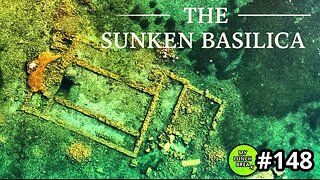Premium Only Content

The Miracle from the Soil: How Ivermectin Changed the World
Ivermectin was discovered in Tokyo by two scientists — Dr. Satoshi Ōmura and Dr. William C. Campbell.
Dr. Ōmura was actually a golfer, and during one of his golf trips on the east coast of Japan’s Izu Peninsula, he collected a small sample of soil. When that soil sample was taken back to the lab, scientists discovered a unique type of bacteria capable of killing roundworms in mice.
They isolated the bacteria, extracted its active compound, and slightly modified its structure. The result was a brand-new drug — Ivermectin.
It became a huge breakthrough, earning both Dr. Ōmura and Dr. Campbell a Nobel Prize for their discovery.
What makes Ivermectin special is still somewhat mysterious to scientists, but it appears to penetrate the nervous system of parasites, disabling their neurons and essentially paralyzing them until they die.
By 1988, Ivermectin was being used widely across Africa to treat river blindness — a devastating disease caused by parasitic worms. At that time, the World Health Organization reported that around 270,000 people had lost their eyesight due to the disease.
Thanks to Ivermectin, river blindness is now on the brink of elimination.
Because of its remarkable effectiveness against parasites, Ivermectin was once recognized as second only to penicillin in terms of its global impact on human health. Over the past 30 years, more than 3.7 billion doses have been safely taken by humans worldwide.
-
 2:14
2:14
Canadian Citizens Journal
18 hours ago💸 When a Bill Dies in Canada — and Why It’s a Huge Waste of Our Tax Dollars
44 -
 23:07
23:07
DeVory Darkins
4 hours ago $8.75 earnedDemocrats EMBARRASSED after No Kings Protest officially FLOPS
4.68K64 -
 2:45:26
2:45:26
Barry Cunningham
4 hours agoV.P.J.D. VANCE AND SEC OF WAR PETE HEGSETH GIVE REMARKS AT U.S. MARINES 250TH ANNIVERSARY
104K6 -
 LIVE
LIVE
Tundra Tactical
5 hours ago $6.99 earned🛑{LIVE NOW!!} The Great Tundra Nation Gun Show!!!! Presented By MGS Trade School
878 watching -
 4:35:07
4:35:07
Right Side Broadcasting Network
4 days agoLIVE: VP Vance Attends the U.S. Marine Corps 250th Anniversary Celebration - 10/18/25
45K40 -
 LIVE
LIVE
Mally_Mouse
21 hours ago🔥🍺Spicy HYDRATE Saturday!🍺🔥-- Let's Play: Prison Life 2
99 watching -

Pepkilla
3 hours agoBattlefield 6 SMG Camo Grind
7.36K1 -
 14:22
14:22
Exploring With Nug
10 hours ago $4.28 earnedThe River Exposed a Secret That No One Was Supposed to See!
34.6K3 -
 23:23
23:23
MYLUNCHBREAK CHANNEL PAGE
11 hours agoThe Sunken Basilica
77.4K7 -
 8:05
8:05
Hollywood Exposed
2 hours agoCharlie Sheen STUNS Tucker Carlson With His Shocking Political Confession
8.77K16